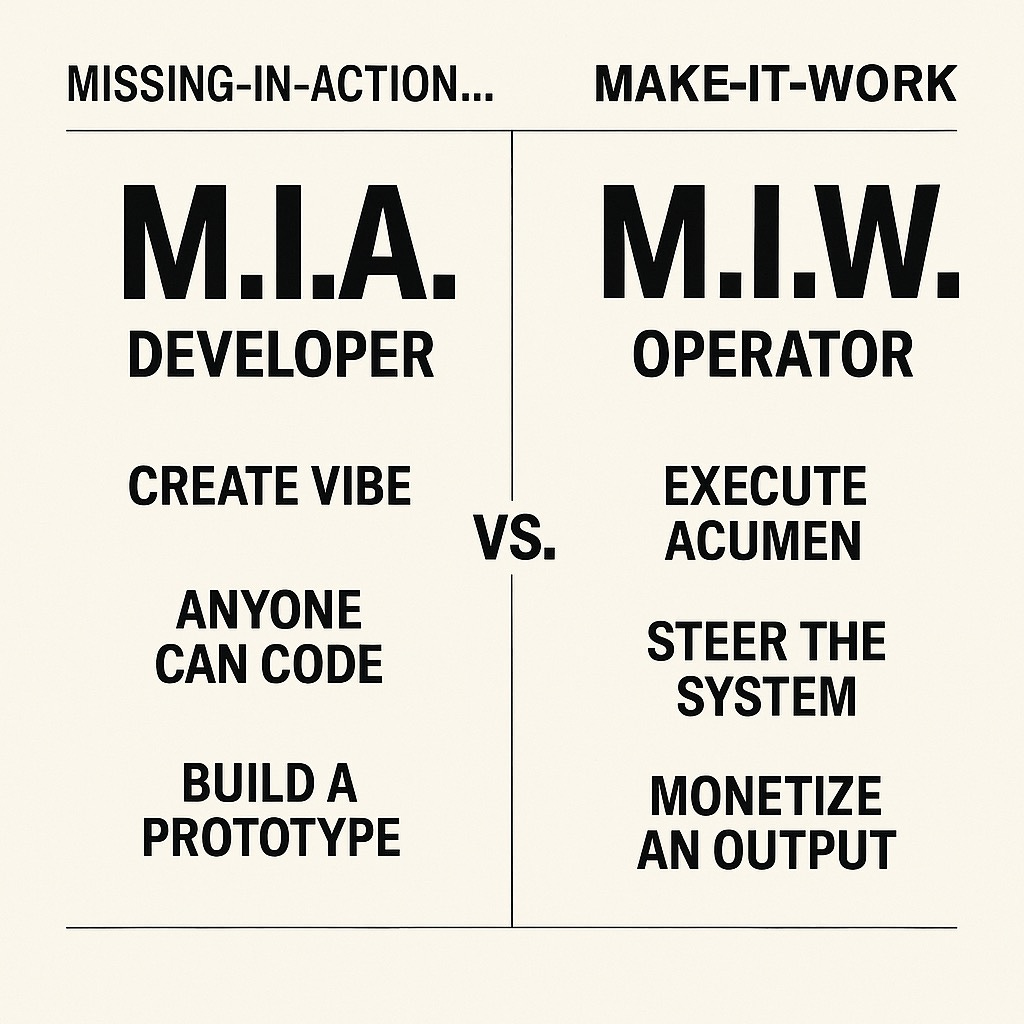M.I.A. to M.I.W.—The Rise of Applied Intuition
We’re shifting from M.I.A. (Missing-in-Action) developer roles to a new class of M.I.W. (Make-It-Work) operators.
It’s not about who can code anymore.
It’s about who can coordinate, constrain, and convert chaos into flow.
The market is flooded with output.
Everyone’s building. Few are delivering.
Execution acumen is now the rare skill.
We don’t have a shortage of ideas, we have a shortage of people who know what to do after the prototype.
All these “I built this company in two weeks” posts?
How many of them are actually monetized?
How many became systems? Revenue? Anything other than another demo lost in the feeds?
We’ve entered the post-hackathon economy.
The vibe is real. But vibe is not a business model.
You don’t need to understand matrix math, embeddings, or token streams. But if you can shape what you feed the model, if you know how to describe what good looks like, and tune for it, you win.
You don’t have to understand 480V supercell charging to drive a Tesla.
You don’t need to know how optical cameras differ from LIDAR to let it self-drive.
But you do need to learn how to ride the system.
You train it. It trains you.
And over time, intuition gets upgraded to instrumentation.
That’s the skill now:
Knowing what to ask
Knowing what’s off
Knowing how to steer it back
That’s applied intuition. And it’s very much the job.
We’re not looking for prompt wizards or GenAI poets.
We’re looking for translators, people who can bridge between the mess of raw output and the discipline of reliable delivery.
Vibe isn’t the product.
Vibe is potential.
The job is turning it into something that works.
That’s where the net-new roles are emerging:
Creative operators
Input strategists
AI flow wranglers
Executional translators
The ones who don’t drown in infinite variation, but focus it.
Not by guessing. Not by hacking. But by tuning instinct to outcome.
This is where product meets presence.
This is what makes it work.



